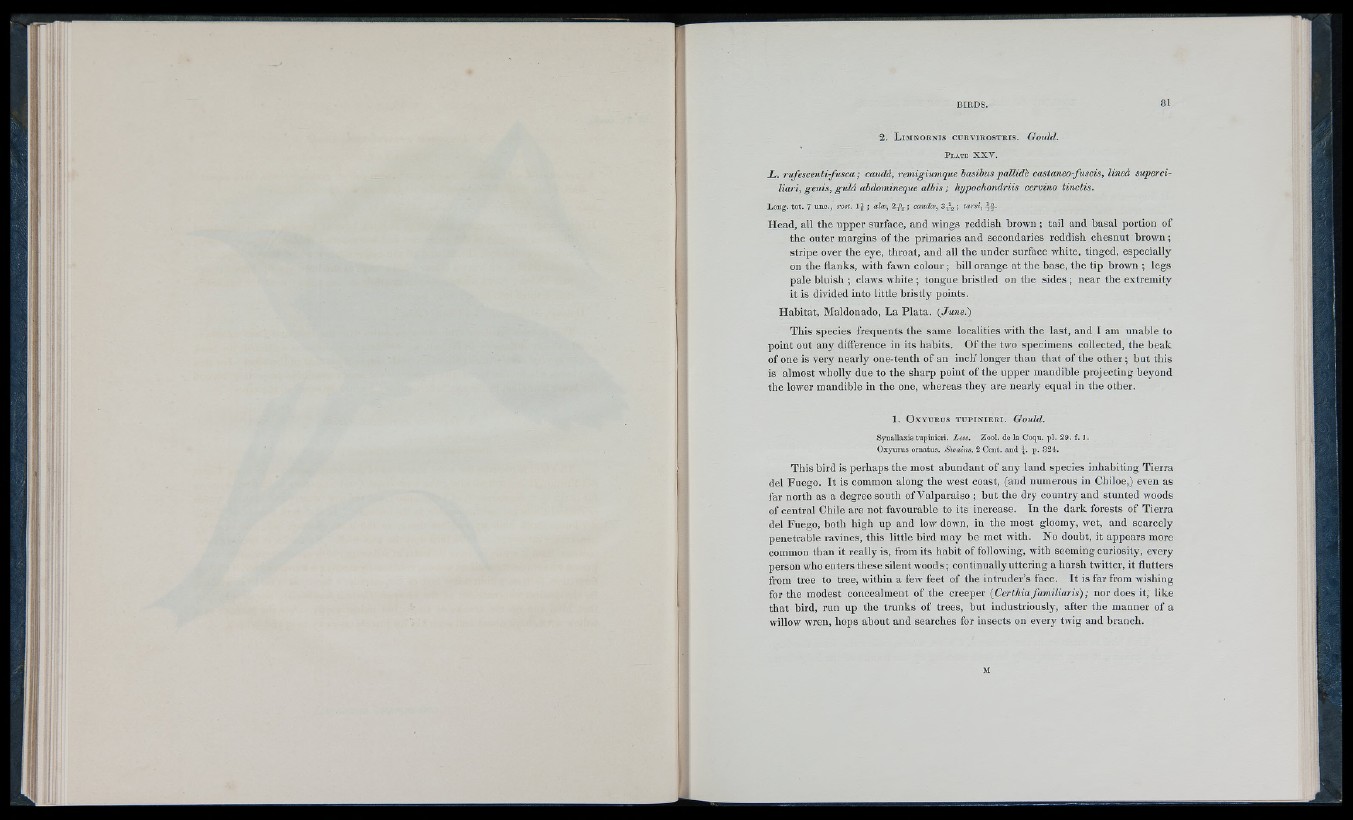
2 . L im n o r n i s c u r v ir o s t r i s . Gould.
P late X X V .
L . rufescenti-fusca ; caudâ, remigiumque basibus pallidè castaneo-fuscis, lineâ superci-
liari, genis, gulâ abdomineque albis ; hypochondriis cervino tinctis.
Long. tot. 7 unc., rost. ; aloe, 2 ^ ; ' caudæ, tarsi,
Head, all the upper surface, and wings reddish brown ; tail and basal portion of
the outer margins of the primaries and secondaries reddish chesnut brown ;
stripe over the eye, throat, and all the under surface white, tinged, especially
on the flanks, with fawn colour ; bill orange at the base, the tip brown ; legs
pale bluish ; claws white ; tongue bristled on tbe sides ; near the extremity
it is divided into little bristly points.
Habitat, Maldonado, La Plata. (June.)
This species frequents the same localities with the last, and I am unable to
point out any difference in its habits. Of the two specimens collected, the beak
of one is very nearly one-tenth of an inch' longer than that of the other ; but this
is almost wholly due to the sharp point of the upper mandible projecting beyond
the lower mandible in the one, whereas they are nearly equal in the other.
1 . O x y u r u s t u p i n i e r i . Gould.
Synallaxis tupinieri. Less. Zool. de la Coqu. pi. 29. f. 1.
Oxyurus ornatus. Swains. 2 Cent, and p. 824.
This bird is perhaps the most abundant of any land species inhabiting Tierra
del Fuego. It is common along the west coast, (and numerous in Chiloe,) even as
far north as a degree south of Valparaiso ; but the dry country and stunted woods
of central Chile are not favourable to its increase. In the dark forests of Tierra
del Fuego, both high up and low down, in the most gloomy, wet, and scarcely
penetrable ravines, this little bird may be met with. No doubt, it appears more
common than it really is, from its habit of following, with seeming curiosity, every
person who enters these silent woods; continually uttering a harsh twitter, it flutters
from tree to tree, within a few feet of the intruder’s face. It is far from wishing
for the modest concealment of the creeper (Certhiafamiliaris); nor does it, like
that bird, run up the trunks of trees, but industriously, after the manner of a
willow wren, hops about and searches for insects on every twig and branch.